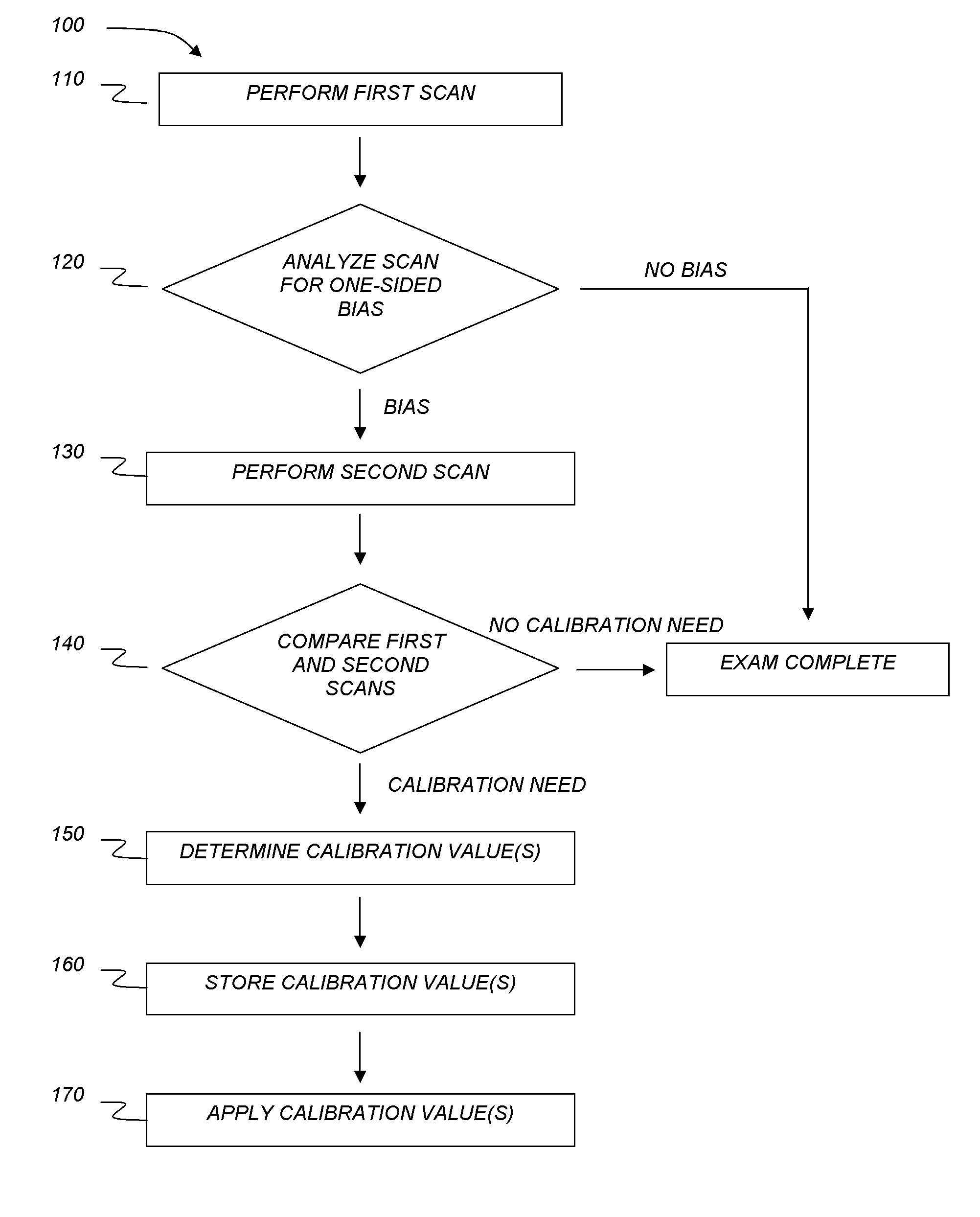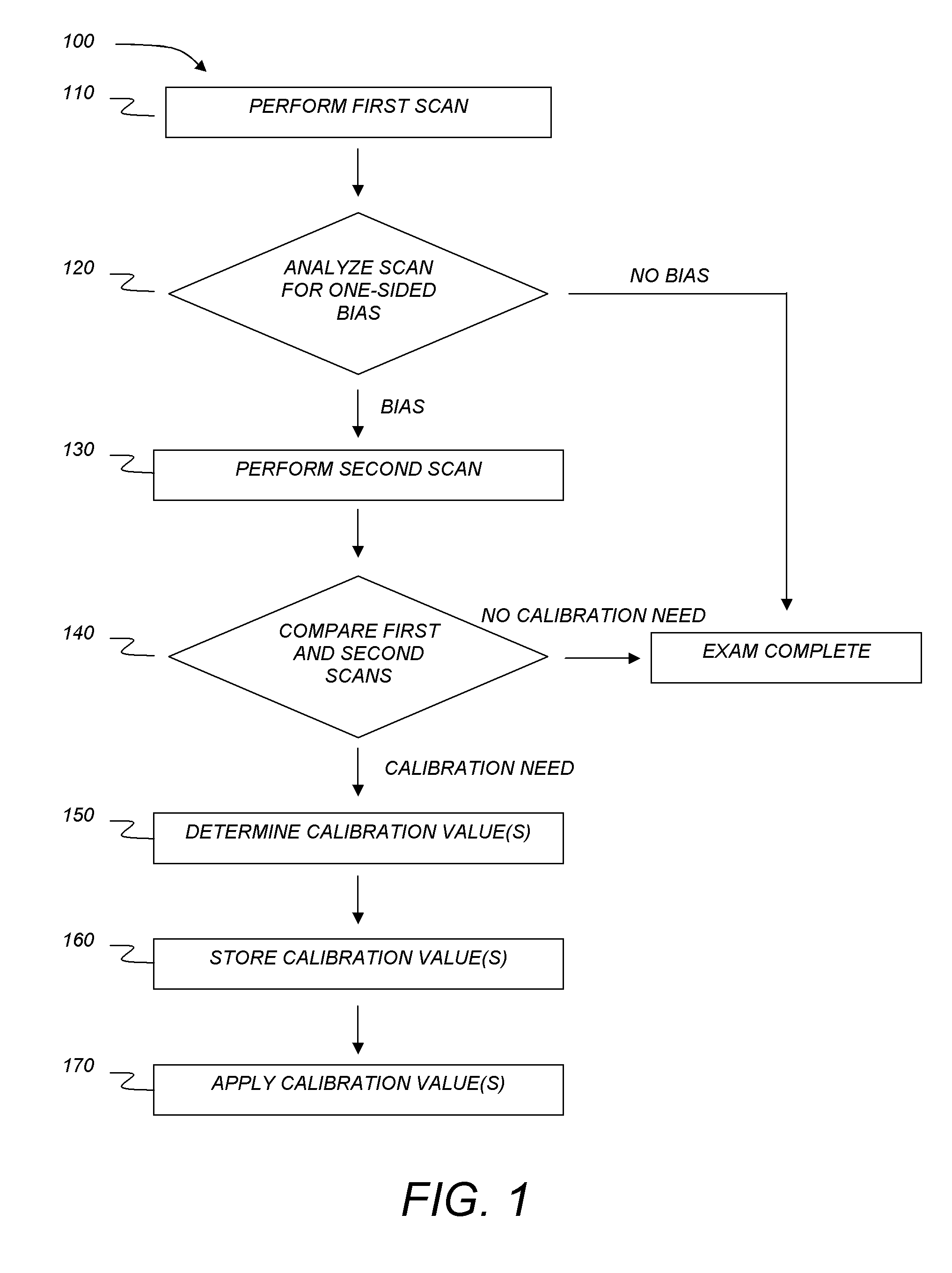Calibrating a thermal scanning system
a thermal scanning and calibration method technology, applied in the field of thermal scanning system calibration, can solve the problems of lack of objective measurement basis to alter the calibration value, the probability of data collection from patients using sensors that have not been recently calibrated, and the inability to perform calibration procedures accurately and repeatably, so as to improve the thermal scanning calibration protocol and calculation, the effect of eliminating the possibility of performing a calibration procedur
- Summary
- Abstract
- Description
- Claims
- Application Information
AI Technical Summary
Benefits of technology
Problems solved by technology
Method used
Image
Examples
example
[0049]The following example describes a particular embodiment of a method for calibrating an Insight Millennium Rolling Thermal Scanner. Those skilled in the art will understand that other embodiments use other calibration methods and / or devices.
[0050]The Rolling Thermal Scanner is rolled up the spine in an upward scan, collecting a first set of thermal scanning data. As the scanner rolls up the spine, an UpLeftAvgTemp (average temperature of the left thermal sensor on the upward scan) and an UpRightAvgTemp (average temperature of the right thermal sensor on the upward scan) values are also calculated. For each thermal sensor, these values are rolling averages of (Temp−CaseTemp) for each data point except the C1 values, where “Temp” is the temperature recorded by a thermal sensor and “CaseTemp” is the temperature of the rolling scanner. The Rolling Thermal Scanner is equipped with a thermal sensor that reports the temperature of the scanner itself (CaseTemp), which permits the conve...
PUM
| Property | Measurement | Unit |
|---|---|---|
| temperature bias | aaaaa | aaaaa |
| temperature bias | aaaaa | aaaaa |
| temperature | aaaaa | aaaaa |
Abstract
Description
Claims
Application Information
 Login to View More
Login to View More - R&D
- Intellectual Property
- Life Sciences
- Materials
- Tech Scout
- Unparalleled Data Quality
- Higher Quality Content
- 60% Fewer Hallucinations
Browse by: Latest US Patents, China's latest patents, Technical Efficacy Thesaurus, Application Domain, Technology Topic, Popular Technical Reports.
© 2025 PatSnap. All rights reserved.Legal|Privacy policy|Modern Slavery Act Transparency Statement|Sitemap|About US| Contact US: help@patsnap.com



